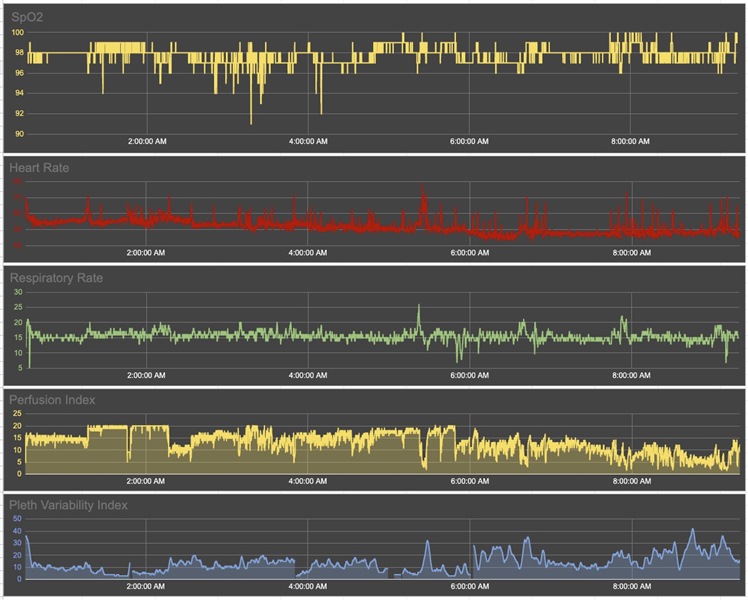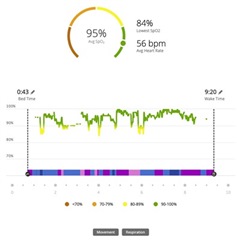

Recently upgraded to the Fenix 6x Sapphire. Loved everything about it but the overnight Pulse Ox reading showed that I was frequently in the low 80s, and I'm at sea level! So that made me worry a bit... I searched online to see if anyone has done an actual comparison with an accurate SpO2 meter during sleep but couldn't find any result.
Good thing that I have a hospital-grade SpO2 fingertip sensor to compare to, so I did a few nights of recording for comparison and this is what they look like when compared side by side, the hospital-grade SpO2 showed one short event of lowest oxygen saturation at 91%, my Fenix 6x Sapphire showed several occurrences of low 80s throughout the night.
Bottom line, the PulseOx feature should still be valuable for altitude adaptation, but don't freak out if you see your Garmin watches showing your oxygen saturation in the 80s, it's most likely inaccurate. it certainly is not for me :)


